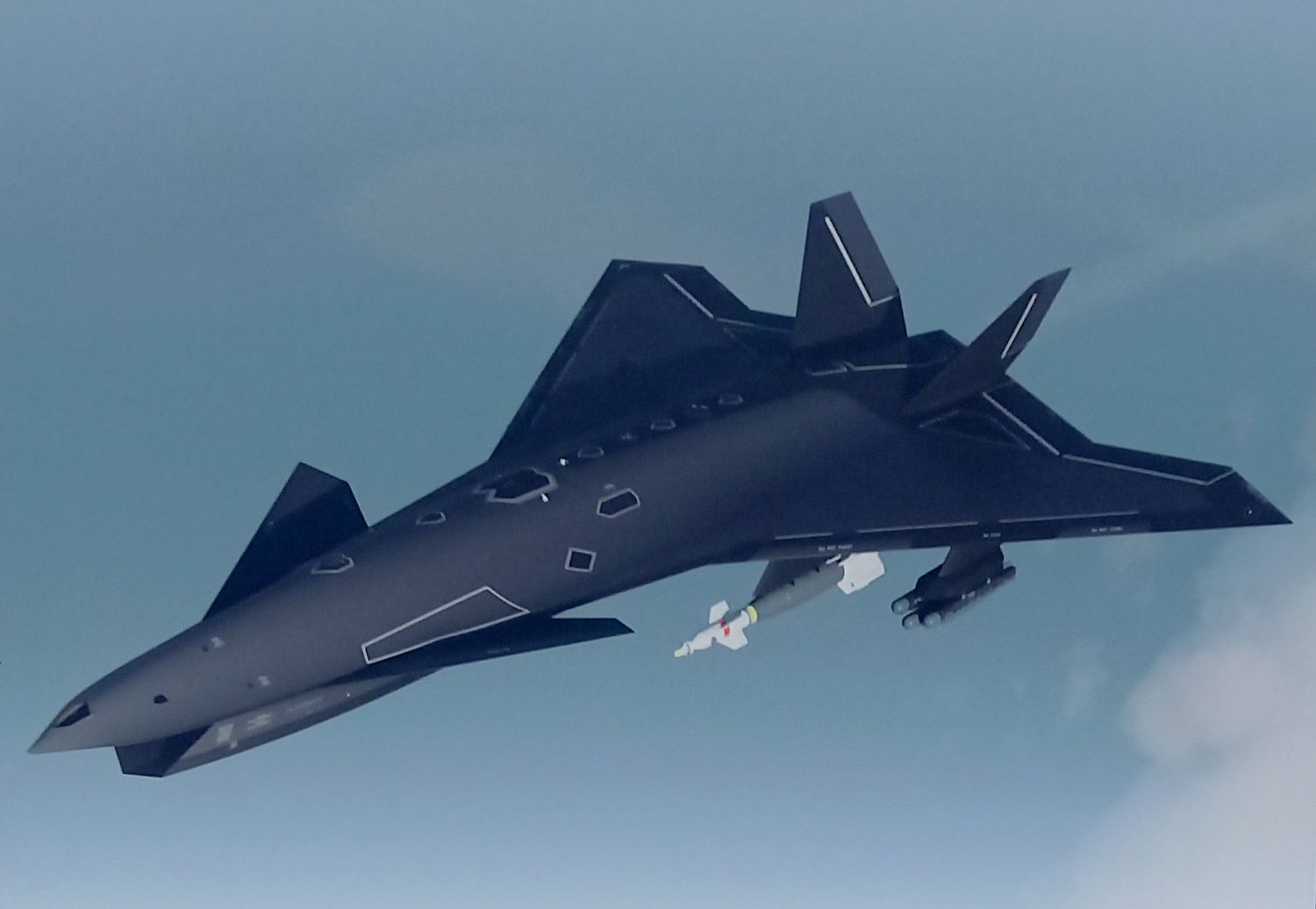From June 5 to 9, during the International Aerospace Exhibition ILA in Berlin, the German branch of Airbus will present the Wingman, a conceptual unmanned combat aircraft. Thanks to the journalists present in Berlin, we can already appreciate in greater detail the mock up in real size of the drone and know its general characteristics, one day before the opening of the exhibition.
Gerhard Hegmann published on his X account (formerly Twitter), some very interesting images of the Wingman mock up while it was being assembled, which gives us a general idea of its dimensions and elegant lines. But perhaps the most interesting is the poster with the three views (a classic we love) and the general characteristics of the drone.
Einer der Stars auf der Berliner Luftfahrtmesse #ILA24 : #Wingman -Modell von @AirbusDefence als künftig unbemannter Begleiter für Eurofighter. Schautafel zeigt, wo die Waffen versteckt werden. Kann mit und ohne Seitenleitwerk fliegen. Bislang ist es nur ein Konzept.… pic.twitter.com/NFHytT4GiU
— Gerhard Hegmann (@GeHegmann) June 4, 2024
An elegant hunter
Wingman is characterized by a tailless design and equipped with canards on the leading edge root extensions (LERX), possessing a trimmed delta wing and an elongated and tapered fuselage. The sharp angles, the use of serrated edges, the internal weapons bay, the angled air intake of supersonic diverterless inlet (DSI) design, and the concealed “upward facing” engine exhaust outlet, speak of an aircraft configured for low observability and high aerodynamic performance.
Evidently single-engine, the aerodynamic configuration of the Wigman would indicate that it will perform very well in transonic regimes (between 980 and 1200 km/h) and, depending on the presence or not of the afterburner, it could reach supersonic speeds. This is important to be able to “ outpace ” the manned fighter it has to protect and engage in combat with other aircraft or perform penetrations into enemy territory at relevant combat speeds.
Showing the #Wingman is meant to be more than a ‘Day 1 of the war stealth platform’, Airbus artwork at #ILA24 shows it fitted with ‘beast mode’ external weapons… pic.twitter.com/CWb2CnYxHW
— Gareth Jennings (@GarethJennings3) June 4, 2024
In addition to the internal weapons bay, the drone would have four under-wing hardpoints for external weapon and sensor loads, which would increase its radar signature, but enhance its lethality.
The eyes and ears of the Wingman
As primary sensors, the Airbus design shows an opening in the top of the nose for an optical/infrared element, suggesting the presence of an infrared search and track system (IRST). Beneath the fuselage, behind the weapons bay, what could be an advanced electro-optical target designation system, similar to the F-35’s EOTS, is outlined.
On the fuselage there are openings and spaces for a myriad of antennas and sensors in stealth configuration, among which appears to include an optronic missile launch detection sensor with four openings, covering 360° around the aircraft.
As for active detection, neither the mock-up nor the three-view graphic show evidence that the drone has a dielectric radome in the nose (or room to spare) to install a radar, under the presumed IRST. Perhaps the nose is interchangeable with other modules, as proposed for the Remote Carrier, and an AESA radar or electronic jamming equipment could be placed in place of the IRST, depending on the mission assigned to the Wingman.
There do appear to be antennas installed on the wings, which could have both passive (ESM) and active (radar or ECM) sensing functions. Advances in software and advanced TRM modules allow the same hardware to perform multiple functions simultaneously. The universal radio frequency sensor technology being developed for sixth-generation fighters (e.g., the JAGUAR project) will combine the functions of current radar, passive radio frequency detection, jamming and communications from common elements, with the added possibility of distributing them throughout the aircraft structure, allowing 360° detection and self-defense.
Fighter size
Designed to perform missions in Manned-Unmanned Teaming (MUM-T) with other manned fighters such as the Eurofighter or the F-35 Lightining II, the Wingman must be able to keep up with them for the duration of the mission. In other words, it must have similar flight performance, while carrying an adequate load of weapons and sensors. And that is why the Airbus proposal has the dimensions of a single-engine fighter, larger than a Gripen E, for comparison.
Airbus describes the drone with the following dimensions:
- Wingspan of 12 meters (39.37 feet)
- Overall length of 15.54 meters (50.98 feet)
- Height of 2.53 meters (8.3 feet)
- Total wing area is 61.22 square meters (61.22 square meters)
Finally, the rendering and the three views show a pair of panels on the upper forward part of the fuselage, which could be used to access the canard actuation mechanisms and other equipment for maintenance, or could be the location from which the in-flight refueling probe is deployed. Many of the tactical missions intended for unmanned combat aircraft such as the Wingman will be executed at long distances from the deployment bases, so it is not a bad idea to have this capability. It should also be noted that Airbus is a pioneer in the development of autonomous in-flight refueling solutions, so this is quite a realistic possibility.
Although a very interesting design, let’s not forget that for now the Wingman is only a concept that may or may not end up being manufactured in series, in the presented configuration or in a similar one. From Airbus they state that the German Air Force (Luftwaffe) is very interested in possessing this capability for the 2030s, and it is quite likely that they will try to embark the Spanish Air and Space Force in this project, taking into account the close collaboration established between Madrid and Berlin around the Eurofighter, the A400M, the ECRS MK1 radar and the FCAS, among other projects.



Comentarios
Para comentar, debés estar registrado
Por favor, iniciá sesión